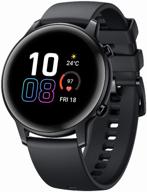
Review on 📸 Nikon AF FX NIKKOR 80-200mm f/2.8D ED Zoom Lens: Review, Features, and Compatibility with Nikon DSLR Cameras by Jennifer Wilson

Oh my God. wonderful lens.
This lens doesn't come cheap unless you compare it to the Nikon 70-200mm AF-S VR2. If you are looking for a professional telephoto lens, your number one choice is the Nikon 70-200. more than twice the price, or this lens. You can also look at third-party offerings from Sigma and Tamron that roughly match this lens. When choosing this lens, I could afford two lenses: this and the Sigma 70-200 f2.8. Nikon cost about 25% more, but Sigma recently increased the price of their lens - presumably due to the popularity that they could do it. Now the cost difference between the two lenses is only about 15%. The Sigma lens I considered was a cheaper 70-200mm F2.8 EX DG APO Macro HSM II (non-vibrating version) that costs about the same as Nikon. Sigma for reasons I will outline below. But I have to say that you probably can't go wrong with either lens as both are of professional caliber. First, it's an AF lens, not an AF-S, meaning it can autofocus if you don't have it. This is Nikon's current production version of this lens, and I think it's superior to older versions (with the possible exception of the short-lived AF-S version). Nikon still makes it, probably because of the high cost of their flagship 70-200. The lens is an older design, so it doesn't have VR (vibration reduction) or AF-S (motor in the lens). Consequently, the focusing system is slower, but I believe it has been unfairly criticized for that. Perhaps its closest competitor is the Sigma 70-200 f2.8, which has an internal lens focus motor, so it works with less expensive Nikon cameras, but these don't. The focus motors do not have enough power to focus quickly on this lens, especially on more advanced amateur cameras like the D90, D7000, etc. Over the years Nikon have produced several versions of this lens. Earlier lenses, known as "push-pull", zoomed in by pulling or pushing the lens. These lenses are notorious for having notoriously slow autofocus, and perhaps most of the criticism of these lenses' focus speeds can be attributed to these models. In later years, Nikon switched from a two-stroke model to a rotating zoom ring. They are known as double ring models. Nikon has also improved the focus speed of these lenses. Nikon's current offering - and what I have - is a dual ring model. Before purchasing this lens, I watched several YouTube videos doing "focus tests" with various Nikon 80-200 f2.8 models. and Sigma 70-200 f2.8. The focus test consisted of leaving the lens cap on and then pressing the shutter button 1/2, which caused the lens to cycle through its focus range from stop to stop. I also tried this on my lens once the UPS dropped. it's from. I use a Nikon D90 and used a stopwatch to check the focus speed of the lens and since I don't have other lenses I timed several YouTube videos showing various lens and camera combinations. Here are the results: 1. My D90 with a Nikon 80-200 lens: 1.1 seconds.2. YouTube D90 with Nikon 80-200 (two ring zoom): 1.01.1 seconds.3. YouTube D90 with old Nikon 80-200 (two-stroke zoom): 1.6 seconds.4. YouTube D300 with old Nikon 80-200 (two-stroke zoom): 3.4 seconds.5. YouTube D90 with current Sigma 70-200: 1.4 seconds. And for comparison. YouTube (unknown camera) with Nikon 70-200 VR1: 0.6 seconds. The results were enough to convince me that there was no focus speed issue, especially when compared to the Sigma 70-200 (although the Sigma has its own focus motor). Another surprise is that while different cameras focused the same lens at different speeds, the D90 was actually faster than the more expensive D300. However, I would like to add that in Test 3 I was not fully convinced that the lens is actually a two-stroke model. The focus speed suggests it might be a later dual-ring model. And just for comparison, I also checked out the more expensive AF-S Nikon VR1 (which is not the current model). I couldn't find a benchmark for VR2 on YouTube, but I expect it will be as fast as VR1 or faster. Although the Nikon 80-200 is slower than the latest Nikon models, this is to be expected. And my choice was between the Nikon 80-200 and the Sigma 70-200, and Nikon certainly holds its own with these two lenses. I also find that Nikon's optics are better than Sigma's along with brand awareness and resale. Since the current model has been in production for 13 years, it can be assumed that a used lens could be any model from the same year. And the resale of these lenses in excellent condition averaged about 75% of new value. I would say that the lens holds up resale very well. those from resale were already around 60%-70% cheaper than new. There's not a huge difference between the two brands, but considering the Sigma version is much newer, its resale value is unlikely to survive the same age. Resale value alone isn't necessarily an indication of a lens' quality and is probably just as closely related to brand awareness. One thing that constantly bothered me was that I am planning on buying this lens for the last time. Many of those who have used the Sigma have commented that this lens will help you get started in the professional field and if you resell it you'll get your money back on the lens when it's time to upgrade. I suppose the same goes for Nikon, but I don't plan on upgrading in the future like I do right now because while VR and AF-S are good as an amateur photographer, paying twice as much isn't in the budget. Price for a lens with such characteristics. Another frustrating problem I've found with used Nikons is that the manual/auto switch has a tendency to break. Many older lenses had this problem. For some reason it's plastic and seems to be a weak point. Whether that's fair for current production I'll have to wait and see, but the lens comes with a 5-year warranty. other factors. The Sigma lens is known as a macro lens with a minimum focus distance of 3.3. foot and weighs 48.3 ounces. and 7.25 inches long and 3.3 inches in diameter. In comparison, I was surprised that the Nikon also has a macro function, but that it has to be set to manual focus mode (which is not unusual for a macro lens). . For Nikon, the normal minimum focus distance is 5.9ft and the macro distance is 4.9ft. The Nikon weighs 45.8 ounces, is 7.3 inches long and 3.4 inches in diameter. Neither lens has a huge advantage over the other in this regard. So it depends on usage. The Nikon lens is known for being very sharp with creamy smooth bokeh and it certainly lived up to those superlatives the first time I used it. I am very happy with this purchase. On the other hand, the Sigma is known to be a bit soft at longer focal lengths. But that, like everyone else, is idle talk and how much of it is related to the truth I can't tell as I don't have that lens. Another problem with the D90 and a Nikon lens is that there is a known limitation that if the lens is used at a minimum distance of 80mm and a minimum focus distance of 5.9ft, the camera might think the lens is is in focus when it is is not (this is stated in the D90 manual). In such situations, you can always switch to manual/macro mode to focus the lens. However, I did not notice any wrong focus. Not to say it won't happen, but I haven't had a chance to see it yet. In any case, given my photography habits, this event is unlikely to happen. I think that makes this lens great, but not perfect. One thing I've found, especially when shooting at f2.8 with a telephoto lens, is that you have to relearn how to focus the camera and possibly choose manual focus. Point. If the lens doesn't focus on the intended subject, you may end up with a blurry photo at F2.8. But that is typical of all lenses of this type. In summary, when comparing Sigma and Nikon lenses, if you have a D70 or better (camera body with internal focus motor) you will love this lens. If you own an entry-level Nikon (D3100, D5100, etc.), unless you want to spend four times what your camera costs on a Nikon 70-200 lens, the Sigma is probably your choice. My son has a D3000 and cannot borrow my lens.
- New
- No paint required
New products
Comments (0)
Top products in 👓 Lenses
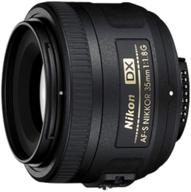
Nikon 35mm f/1.8G Auto Focus Lens for Nikon DSLR Cameras - Black (Model 2183)

125 Review
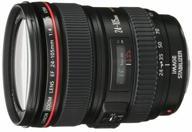
Canon EOS SLR Camera Lens EF 24-105mm f/4 L IS USM

124 Review
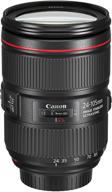
Black Canon EF 24-105mm f/4L IS II USM Lens - Model 1380C002

78 Review
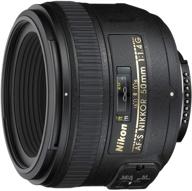
📷 Nikon AF-S NIKKOR 50mm f/1.4G Lens with Auto Focus: Perfect for Nikon DSLR Cameras

76 Review







